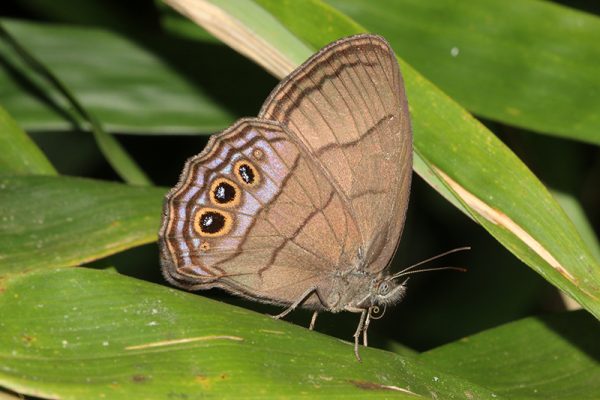Researchers have discovered a common butterfly genus from South America previously believed to contain just three species actually has 12.
The international team studying the butterfly genus Zischkaia named one of the nine new species after Andy Warren, senior collections manager of the Florida Museum of Natural History’s McGuire Center for Lepidoptera and Biodiversity.
Warren, a skipper expert, has named a number of new butterfly species including those after the Field Museum’s Emily Graslie and Lepidoptera expert Thomas Emmel, the McGuire Center’s founding director who died in May 2018.

Florida Museum photo by Andy Warren
Study lead author and Florida Museum lepidopterist Shinichi Nakahara describes Warren as an extremely productive taxonomist with a broad knowledge of butterflies. In 2016, Warren traveled to Brazil and collected several individual specimens that led to his namesake.
“We thought this is a good opportunity to recognize his achievements, both as a friend and scholar,” Nakahara said. “In terms of accomplishments and passion, Andy is one of the best lepidopterists out there.”
Zischkaia warreni, like the other 11 species in the genus, is brown and about the size of a U.S. half dollar coin. The species also has five circular eyespots and darker bands of scales on the underside of its hindwings and is found only in southern Brazil.
Nakahara said the Zischkaia genus had been poorly studied, but DNA sequencing and morphological analysis allowed researchers to make better conclusions about the species’ diversity.
“Butterflies are among the best studied group of insects, and it’s incredible to have this kind of diversity hidden in just one genus,” Nakahara said. “But South America is the most biodiversity-rich region on earth so there can be more surprises like this waiting for us.”
The other new species described and named as part of the study are Z. abanico, Z. arctoa, Z. argyrosflecha, Z. arenisca, Z. baku, Z. chullachaki, Z. josti and Z. mielkeorum.
The study was funded by the National Science Foundation and was published as a monograph in the European Journal of Taxonomy. The Florida Museum’s Kaylin Kleckner, Lei Xiao and Keith Willmott also co-authored this study.
Source: Shinichi Nakahara, snakahara@ufl.edu, 352-273-2019
Learn more about the McGuire Center for Lepidoptera and Biodiversity at the Florida Museum.